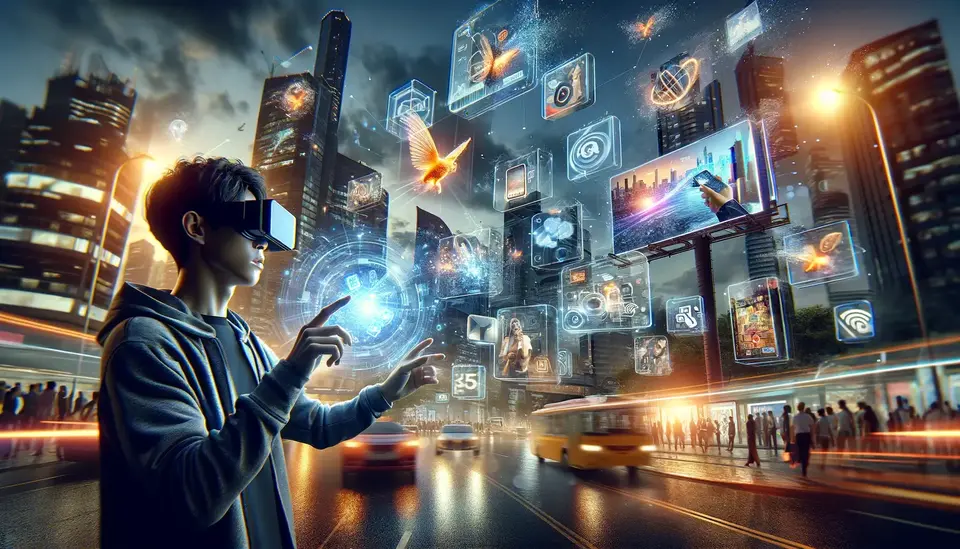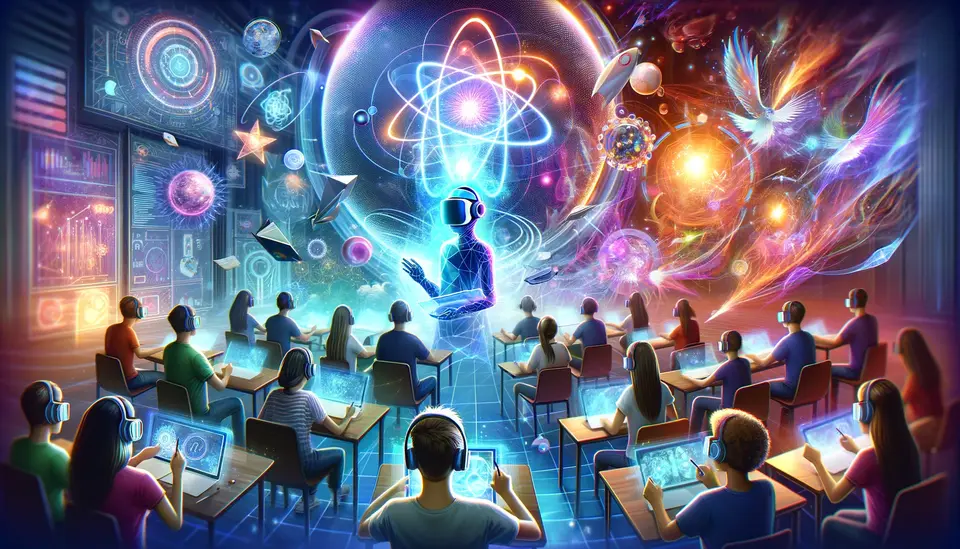Team Collaboration Using Virtual Reality (VR)
Posted on May 1, 2023 6 minutes 1072 words
Table of contents
- What is Virtual Reality?
- Unlocking the Potential of Team Collaboration with Virtual Reality
- Navigating the VR Landscape: Top Tools for Team Collaboration
- VR Collaboration in Action: Success Stories from the Real World
- Addressing the Hurdles: Overcoming the Challenges of VR Collaboration
- The Future of VR in Team Collaboration
- Conclusion
Virtual reality (VR) has evolved significantly over the past few years, permeating a variety of industries and transforming the way we live, work, and play. As the limitations of traditional collaboration tools become increasingly evident, organizations are seeking innovative ways to improve communication, boost productivity, and foster creativity. Enter VR, a game-changing technology that holds immense potential for revolutionizing team collaboration. This blog post will delve into the many advantages of VR-based collaboration, discuss popular tools, share real-world examples, and explore the future of this technology in the realm of teamwork.
What is Virtual Reality?
Virtual reality is a computer-generated environment that simulates a three-dimensional, interactive world. Users wear head-mounted displays (HMDs) and, in some cases, gloves or other input devices to immerse themselves in this virtual environment, experiencing a sense of presence and realism. From its early beginnings in the 1960s to the development of advanced VR systems like the Oculus Rift, HTC Vive, and PlayStation VR, the technology has come a long way, proving its potential for a wide array of applications, including team collaboration.
Unlocking the Potential of Team Collaboration with Virtual Reality
Virtual reality offers a myriad of benefits for team collaboration, as it addresses the challenges faced by remote and dispersed teams. By creating a sense of presence, facilitating effective communication, and promoting creativity and innovation, VR technology is transforming the way teams work together. With VR, organizations can tap into the full potential of their workforce and create an environment that fosters productivity and growth.
- Improve remote collaboration: VR transcends geographical boundaries, allowing dispersed teams to collaborate seamlessly in a shared virtual environment. This fosters camaraderie, improves communication, and ultimately, drives productivity.
- Enhance communication: VR-based meetings enable natural, immersive interactions that closely mimic face-to-face communication. Non-verbal cues, gestures, and spatial audio contribute to a richer understanding among team members.
- Foster creativity: With 3D modeling, simulations, and interactive whiteboards, VR promotes innovation by providing an engaging space for ideation, brainstorming, and problem-solving.
- Accelerate decision-making: VR allows teams to test ideas and visualize data in real-time, speeding up the decision-making process.
- Provide a platform for effective training and skill development: VR offers immersive, hands-on training experiences that enhance knowledge retention and skill acquisition.
Navigating the VR Landscape: Top Tools for Team Collaboration
As the demand for VR-based collaboration solutions increases, several tools have emerged to cater to the needs of businesses across various industries. These tools offer unique features and capabilities, designed to help teams work together seamlessly in a virtual environment. By understanding the offerings of each tool, organizations can select the most suitable VR collaboration platform to enhance teamwork, communication, and productivity.
- Spatial: Spatial enables users to collaborate in a shared virtual space with customizable avatars. Teams can interact with 3D models, import documents, and even use gesture controls for an intuitive experience.
- Rumii: Designed specifically for education and enterprise, Rumii allows teams to host virtual meetings, presentations, and training sessions in a realistic environment.
- MeetinVR: With its suite of productivity tools, such as 3D drawing, whiteboards, and multimedia presentations, MeetinVR facilitates creative brainstorming and effective project management.
- VIVE Sync: VIVE Sync caters to businesses seeking a VR collaboration solution that integrates with existing software and hardware ecosystems.
VR Collaboration in Action: Success Stories from the Real World
The power of virtual reality in team collaboration becomes evident when looking at real-world examples. Across diverse sectors, companies have embraced VR technology to overcome challenges, enhance communication, and drive innovation. By examining these success stories, organizations can gain insights into the practical applications of VR and understand the impact it can have on their own collaborative processes.
- Ford Motor Company: Ford utilizes VR to enable engineers and designers from different locations to collaborate on vehicle design, significantly reducing development time and cost.
- Siemens: Siemens has integrated VR into its team collaboration process, allowing employees to explore complex, data-driven simulations for better decision-making and innovation.
- Spatial collaboration in architecture: Architectural firms are leveraging VR to conduct virtual walkthroughs, allowing teams to collaborate on design changes and receive real-time client feedback.
Addressing the Hurdles: Overcoming the Challenges of VR Collaboration
While VR offers significant benefits for team collaboration, it is not without its challenges. Organizations need to navigate the hurdles related to costs, hardware compatibility, and the learning curve associated with new technology. By addressing these concerns and finding effective solutions, companies can successfully integrate VR into their collaboration strategies and fully harness the potential of this transformative technology.
- Costs: While VR hardware and software costs have been decreasing, organizations need to invest in the necessary equipment and infrastructure. Cloud-based VR solutions can help mitigate these costs.
- Hardware requirements: Some VR collaboration tools have specific hardware requirements. A thorough evaluation of compatibility is essential before investing in any tool.
- Learning curve: Introducing VR may require training and onboarding to ensure a smooth transition. Provide resources and ongoing support to help employees adapt to the new technology.
The Future of VR in Team Collaboration
The future of VR is promising, with advancements in technology poised to further revolutionize team collaboration. Here are some areas where VR may evolve and enhance collaboration in the coming years:
- Augmented Reality (AR) and Mixed Reality (MR): The integration of Augmented Reality (AR) and Mixed Reality (MR) with Virtual Reality (VR) will allow for more seamless and interactive experiences. Combining the best of both worlds, teams will be able to collaborate in real-time with virtual and physical elements, providing a more natural and immersive work environment.
- Improved hardware: As VR hardware becomes lighter, more comfortable, and affordable, adoption rates will likely increase. This will enable a broader range of businesses to incorporate VR into their team collaboration strategies.
- Advanced AI integration: The incorporation of AI-driven virtual assistants can further streamline collaborative processes, providing intelligent recommendations, contextual information, and personalized learning experiences.
- Enhanced haptic feedback: The development of more sophisticated haptic feedback systems will enable users to experience realistic touch sensations in VR, further enriching collaboration and communication.
Conclusion
Integrating virtual reality into team collaboration offers numerous advantages that can help organizations overcome the challenges of remote work, drive innovation, and improve overall productivity. As technology continues to advance, the potential for VR in team collaboration will only grow. Companies that invest in this technology today will be better positioned to reap the benefits of a more connected, immersive, and efficient workplace in the future.








